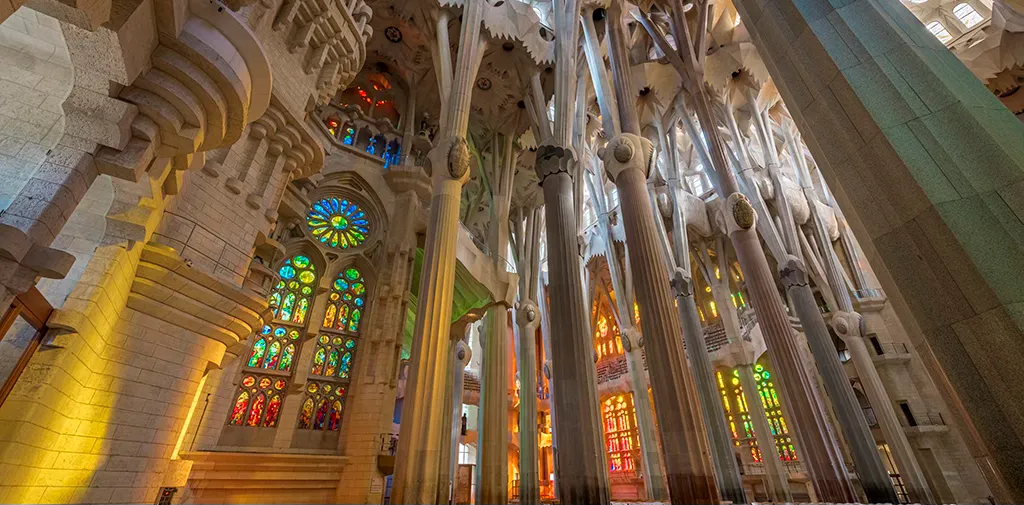Discover how “slow productivity” can transform the way you work and create, according to Cal Newport.
A lesson from the Sagrada Familia
Last year, nearly five million people visited the Sagrada Familia in Barcelona—a steady rise compared to 2023 and 2022. This basilica, Antoni Gaudí’s unfinished masterpiece, attracts visitors from across the globe, with the largest groups coming from the US, followed by France, Italy, South Korea, the United Kingdom, China, and Germany.
But here’s the twist: the Sagrada Familia has now reached its maximum capacity. Officials have warned that exceeding this number of annual visitors could lead to overcrowding, diminuishing the very experience people travel so far to enjoy.
Not bad for a building that remains incomplete—a monument that embodies slow productivity, where there are no stopwatches or deadlines, only a commitment to quality and timeless beauty.
A World Obsessed with Speed
We live in an age where everything is fast, we know it. But the pace of modern life has become relentless. Songs trend for just two weeks before being replaced by the next viral hit—forget the summer-long reign of great summer hits.
Even more telling, the art of appearing has taken precedence over the art of creating. Social media, personal branding, and clever storytelling dominate, as the world races to capture our attention. It’s no longer about the product; it’s about looking extraordinary—and anything that makes us seem ordinary sparks a battle for relevance.
Consider three different scenarios:
- A chef charges outrageous prices for a traditional dish. Is it about positioning? Quality? Or simply getting people talking—good or bad?
- Someone interrupts a colleague trying to learn something new, adding passive-aggressive humor and inappropriate comments—publicly. Is this about nerves? Or a need to prove something about who has the power?
- And finally, social media is flooded with posts announcing projects that never see completion—proof of a culture where presentation often overtakes substance.
Cal Newport, author of Slow Productivity, would say these are symptoms of the same problem: a culture of busyness that values quantity, visibility, and speed over depth, craft, and meaning.
What the Sagrada Familia Teaches Us
The Sagrada Familia offers a striking contrast. Gaudí began work on this monumental basilica in 1883. When he died in 1926, the project was far from finished. More than 140 years later, construction continues—meticulously, patiently, and in accordance with his intricate designs.
This is not inefficiency. It is dedication—an obsession with quality over speed, an architectural reminder that greatness requires time.
Newport’s philosophy echoes this mindset. His book asks a provocative question:
What if success—and satisfaction—doesn’t come from doing more or being everywhere, but from doing fewer things better?
The Creativity Paradox: Quality vs. Quantity
Many artists, writers, musicians, and creators fall into the trap of believing that visibility equals value. But history disagrees. Van Gogh painted from emotional urgency, not fear of losing followers. Virginia Woolf reworked her sentences to capture profound thought—not to meet a posting schedule.
Slow productivity is about deep work—creating with purpose and care, free from the need for constant validation. It means accepting that truly meaningful work may take time and, sometimes, the courage to disappear for a while.
Breaking Free from the Performance Trap
Today, staying late at the office to “look busy” still earns praise in some cultures, despite its obvious inefficiency. Newport calls this the trap of pseudo-productivity—doing work that looks impressive rather than meaningful.
His manifesto for slow productivity boils down to three principles:
- Do Less – Focus only on what truly matters.
- Work at a Natural Pace – Reject the constant pressure to rush.
- Obsess Over Quality – Make excellence your non-negotiable standard.
Applied to creative work, this means:
- Creating before sharing—write, paint, compose, or photograph without the immediate urge to post.
- Choosing projects with long-term value over fleeting trends.
- Protecting spaces for deep creation, away from the constant demand to prove your worth.
Why It Matters More Than Ever
As someone who loves books, music, and art, I see the divide between timeless works and those rushed to market for attention’s sake. Appearing is easy—just add a filter and a catchy caption.
Creating something meaningful? That takes time, focus, and the courage to slow down. And this story about The Sagrada Familia proves that greatness doesn’t come from speed. It comes from patience, vision, and dedication—the willingness to do less, but do it better.
So, maybe it’s time to pause. To trade busyness for craftsmanship. To build—not just for today—but for something that lasts as “Slow productivity” suggests. And if you’ve enjoyed this article about Cal Newport, you can also read about his theories for Deep Work and Digital Minimalism.



